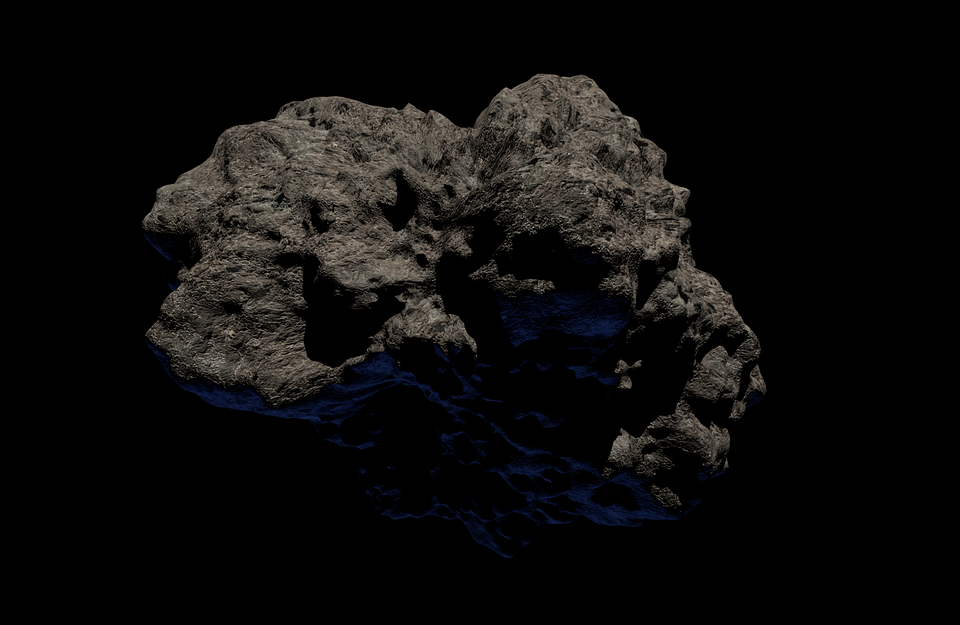Many might only know about space rocks hurtling towards our planet’s orbit every now and then. However, some scientists from Japan made an unusual discovery about one particular asteroid.
Kope University Graduate School of Science in Japan Assistant Professor Naoyuki Hiratoa has been studying a near-earth object or NEO asteroid Ryugu with his team of researchers. They referred to Ryugu as a potentially hazardous asteroid when they first spotted it in 2018. They managed to find 77 craters on the space rock after carefully analyzing the photos taken by their spacecraft Hayabusa 2, but that was not the only discovery they made.
Looking closely at the photos of the craters, they noticed the location of each one on the space rock. The craters appeared to be 10 to 20 mm in diameter and most of these dents were found on the eastern hemisphere of the rock that is close to the meridian, compared to the craters found in the western region. The craters were also at low-altitude areas The asteroid’s biggest crater named Cendrillon, is close to where these other craters were found.
This result seems to imply that this side of Ryugu was formed at a later time compared to the other sides of the asteroid. Furthermore, it could also mean that the asteroid must have changed their rotational speed twice.
Previously, Express also reports that while NASA is keeping watch over the space debris that is coming in the direction of the planet, there is a possibility that one asteroid might slip through their watch. Dr. Natalie Starkey, the author of Catching Stardust, explained that the Earth is not completely safe as there could be rogue space debris that could catch everyone off-guard. Starkey went on to say that even though there are so many asteroids and comets that might be coming towards the planet, it is important to learn as many of these asteroids and debris as possible.
Starkey even explains the possibilities of space study over the coming decades, with the advanced technology that might be introduced by that time. “Over the next few decades, we have the opportunity to build up a detailed knowledge of space objects in our neighborhood, and even the ones that are still very far from us.”



 Senate Sets December 8 Vote on Trump’s NASA Nominee Jared Isaacman
Senate Sets December 8 Vote on Trump’s NASA Nominee Jared Isaacman  FDA Lifts REMS Requirement for CAR-T Cell Cancer Therapies
FDA Lifts REMS Requirement for CAR-T Cell Cancer Therapies  Ancient Mars may have had a carbon cycle − a new study suggests the red planet may have once been warmer, wetter and more favorable for life
Ancient Mars may have had a carbon cycle − a new study suggests the red planet may have once been warmer, wetter and more favorable for life  Neuralink Plans High-Volume Brain Implant Production and Fully Automated Surgery by 2026
Neuralink Plans High-Volume Brain Implant Production and Fully Automated Surgery by 2026  Blue Origin’s New Glenn Achieves Breakthrough Success With First NASA Mission
Blue Origin’s New Glenn Achieves Breakthrough Success With First NASA Mission  NASA Astronauts Wilmore and Williams Recover After Boeing Starliner Delay
NASA Astronauts Wilmore and Williams Recover After Boeing Starliner Delay  Cogent Biosciences Soars 120% on Breakthrough Phase 3 Results for Bezuclastinib in GIST Treatment
Cogent Biosciences Soars 120% on Breakthrough Phase 3 Results for Bezuclastinib in GIST Treatment  SpaceX’s Starship Completes 11th Test Flight, Paving Way for Moon and Mars Missions
SpaceX’s Starship Completes 11th Test Flight, Paving Way for Moon and Mars Missions 































